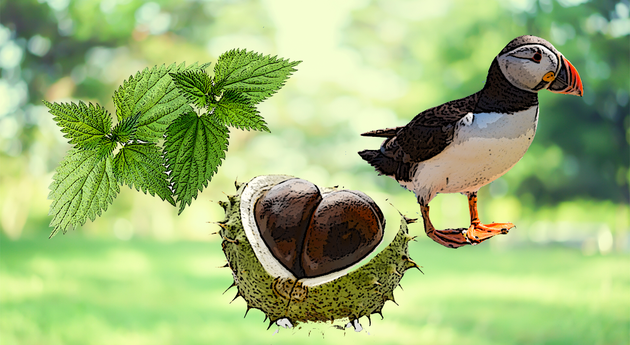
In horribly sad news, British children struggle to identify common wildlife and plants – including conkers – and we can’t help but think they’re missing out.
The research involving 1,000 kids aged 5-16, for family activity app Hoop, found less than half of kids were able to identify stinging nettles – and a quarter of children were clueless as to what a conker is.
For the study, children were shown various natural objects and asked what they were. More than 90% failed to identify a beech leaf and a cabbage white butterfly, which isn’t as shocking.
But 82% failed to identify a bumblebee, just under a quarter didn’t recognise a robin, and a similar amount didn’t know what a badger looked like.
[Read More: Keeping Kids Busy On A Rainy Day In The Holidays]
Here’s what they failed to identify:
Beech leaf (97%)
Cabbage white butterfly (96%)
Bumblebee (83%)
Oak leaf (82%)
Kingfisher (65%)
Blue tit (65%)
Stinging nettle (51%)
Puffin (49%)
Conker (24%)
Robin (23%)
Badger (22%)
Nearly half of the children in the study failing to identify a puffin. That’s pretty bleak. Puffins are (a) rad and (b) on the spine of half of the world’s most beloved children’s books.
Maybe it’s fair enough not being able to recognise types of leaf and some birds, but nearly a quarter of children not knowing what a robin is? Conkers being nonsensical to one in four children? What’s going on?
More than a quarter of parents said their children had little or no interest in the outside world (although, since over half of children don’t recognise nettles, maybe that’s why they don’t want to go outside – they’re getting the hell stung out of them every time).
Going outside is good for everyone, for loads of reasons. Unstructured pottering about builds confidence and creativity, looking after plants can teach responsibility, seeing how plants grow can help kids understand the world around them, and running about has obvious health benefits. In fact, spending time outdoors is good for you in almost every way you could name. There’s an unofficial term, nature deficit disorder, for behavioural and educational problems caused by spending too much time indoors.
[Read More: 4 Ways To Spend Quality Time With Your Kids]
Why aren’t kids going outside, then? A third of parents reckon it’s down to the lure of screen time, with the instant gratification of a smartphone appealing more than the serene, but low-key draw of the outdoors.
Whatever it is, kids need go outside more. There are 27,000 parks and green spaces across the UK, and three million hectares of woodland. There are loads of free activities going on in them – Hoop points out it currently offers almost 9,000 free nature-based activities.
And if the lure of the screen really is too much, remember the mobile bit of “mobile phone”. You can take mobile phones outside. There are apps like NatureGate and FlowerChecker designed to help identify plants and flowers – maybe with a bit of prodding, kids can enjoy the thrill of looking at a little coloured screen while learning a little bit about the world around them.